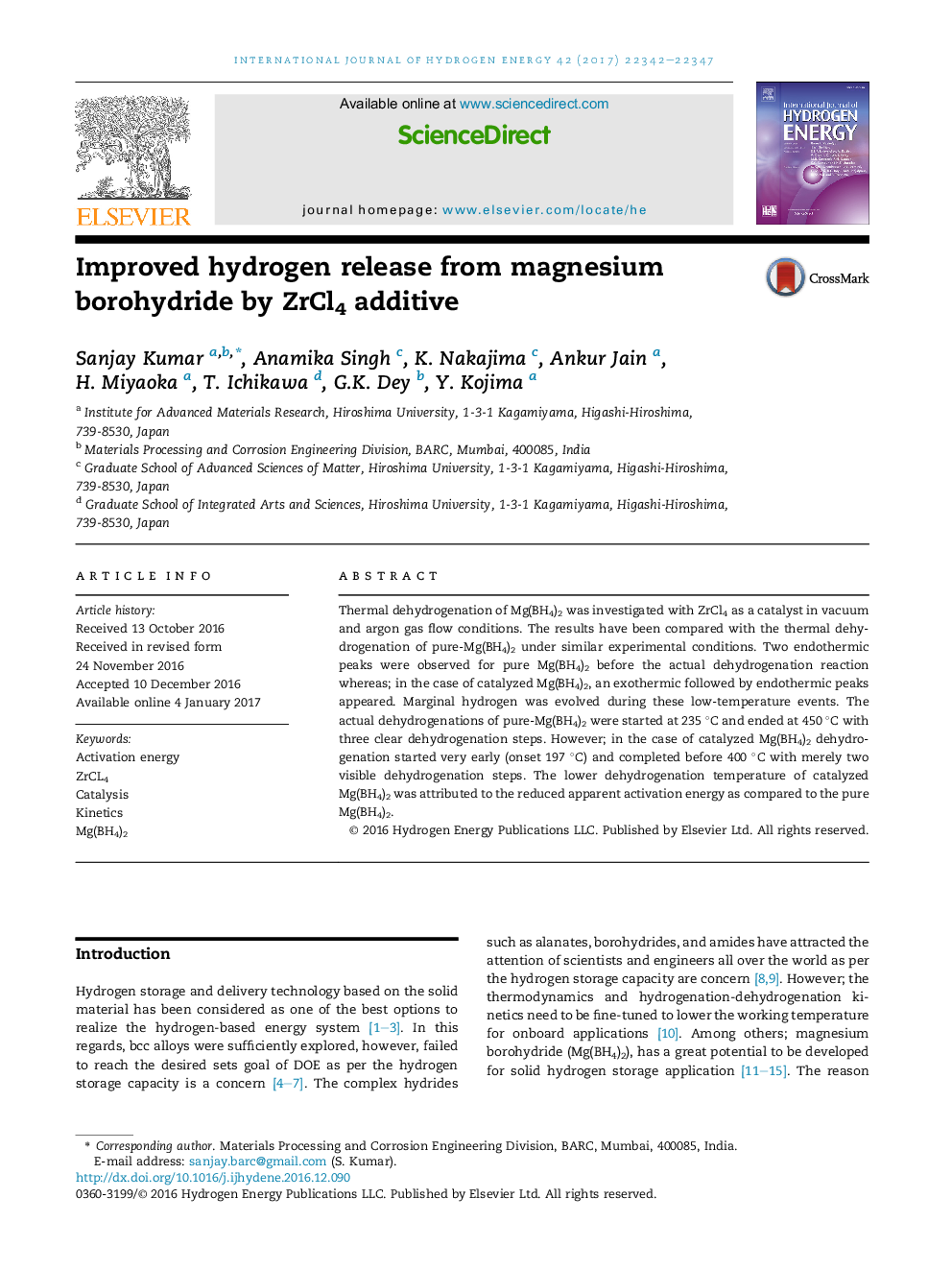| Article ID | Journal | Published Year | Pages | File Type |
|---|---|---|---|---|
| 5145461 | International Journal of Hydrogen Energy | 2017 | 6 Pages |
â¢ZrCl4 decreased the activation barrier for Mg(BH4)2 dehydrogenation.â¢The catalyst reduced the actual dehydrogenation steps.â¢The catalyst increased the rate of MgH2 dehydrogenation.â¢ZrCl4 reduced to ZrCl3 and metallic Zr which acts as a catalyst.
Thermal dehydrogenation of Mg(BH4)2 was investigated with ZrCl4 as a catalyst in vacuum and argon gas flow conditions. The results have been compared with the thermal dehydrogenation of pure-Mg(BH4)2 under similar experimental conditions. Two endothermic peaks were observed for pure Mg(BH4)2 before the actual dehydrogenation reaction whereas; in the case of catalyzed Mg(BH4)2, an exothermic followed by endothermic peaks appeared. Marginal hydrogen was evolved during these low-temperature events. The actual dehydrogenations of pure-Mg(BH4)2 were started at 235 °C and ended at 450 °C with three clear dehydrogenation steps. However; in the case of catalyzed Mg(BH4)2 dehydrogenation started very early (onset 197 °C) and completed before 400 °C with merely two visible dehydrogenation steps. The lower dehydrogenation temperature of catalyzed Mg(BH4)2 was attributed to the reduced apparent activation energy as compared to the pure Mg(BH4)2.
Graphical abstractDownload high-res image (241KB)Download full-size image
